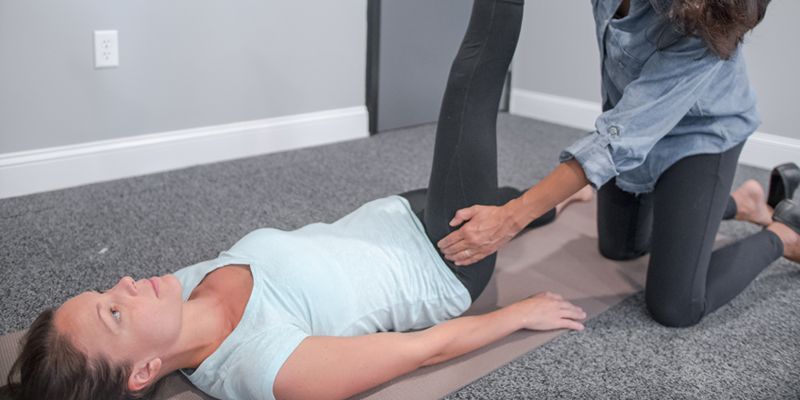
Many of our patients who come to us with Piriformis Syndrome have already tried to treat it through massage therapy, chiropractic care or even physical therapy. Even though they experienced some relief from their symptoms, the results did not last. When treating and diagnosing Piriformis Syndrome, it’s important to look at the alignment of the whole body and how the surrounding muscles are contributing to Piriformis Syndrome.
The piriformis is a muscle that connects your pelvis to your hip. It’s a deeper muscle located underneath the gluteus maximus. The piriformis stabilizes your pelvis and hip. This means when your pelvis and hip need control, the piriformis kicks in to stabilize along with a symphony of other muscles. The sciatic nerve is located under your piriformis.
Piriformis syndrome symptoms usually happens on one side of the body, but some people can experience it on both sides.
Symptoms can be triggered by walking, going up or down the stairs, lifting the leg out to the side, rotating or turning the hip, past sports injuries, walking long periods of time or sitting for extended periods of time.
Piriformis Syndrome doesn’t just occur in athletes – it can happen to people who are sedentary or pregnant. It can occur in people at any age.
The pelvis is made up of many different joints. If these joints are not moving properly, this can contribute to piriformis syndrome. Things like injury, a sedentary lifestyle, pregnancy or back issues might cause your body to adapt and compensate. However, certain muscles can also overcompensate.
If all of the muscles that attach to the pelvis are not working in harmony, the Piriformis muscle will kick in to help control the hip, spine and pelvis. After a while, it will get overworked, which can cause it to spasm or develop trigger points and cause pain down the leg.
When the piriformis muscle becomes too tight, it presses on different nerves and causes pain and tingling down into the back of the leg. Eventually, whenever the muscle is used, it causes pain.
When treating Piriformis Syndrome, it’s important to address the whole body alignment to determine which muscles are causing the piriformis to overwork. It’s important to work with a holistic physical therapist to balance the surrounding muscles. This will take stress off the piriformis and allow the pain to subside so the muscle can function better.
If you’re experiencing Piriformis Syndrome symptoms, click here to schedule a complimentary phone consultation to discuss your symptoms.
In-Person and Online Consultations

